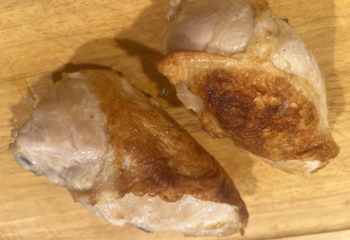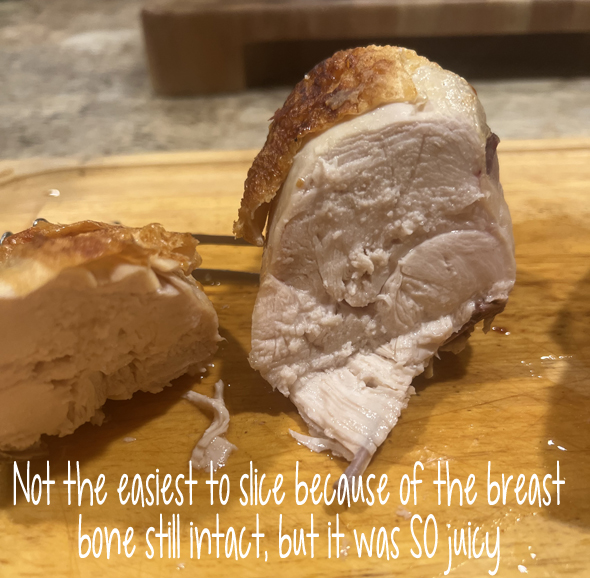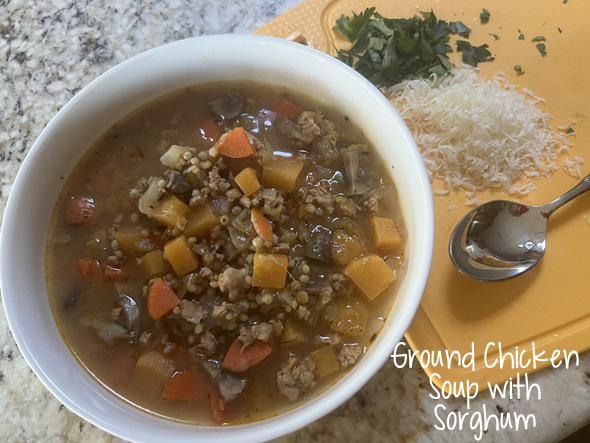My friend Linda T and me in Florence. In the background far right the orange dome of the Duomo cathedral, the Arno river, and the Ponte Vecchio bridge, taken from the Piazzale Michelangelo.
My good friend Linda T, who has a number of recipes on my blog, and I decided about 18 months ago that we’d go to Italy for a couple of weeks this year. Because we’re both pretty old ladies, we decided to stay in one place, and Linda found a perfect Airbnb within throwing distance of the famous cathedral, the Duomo of Florence. Linda celebrated her 80th birthday while we were there, and I’m 84. Our apartment couldn’t have been a more ideal location to get to everything in the city. To the Arno (the river), to the Ponte Vecchio (the famous bridge), to the Uffizi (the marvelous museum), the Medici Chapels (where all the Medici men – princes – are entombed), shopping, and most of all, restaurants. Linda and I are both foodies of the first order, so restaurants featured large in our planning! And oh, did we walk, and walk and walk!
Italians eat late. That’s just the culture. Most restaurants don’t open for dinner until 7:30 pm. We kept to our home-time schedules, rising at about 7, and going to bed about 10, so eating a big dinner late was not something we wanted to do. We ate our main meal at lunchtime and then had leftovers or snacks (fruit and cheese) in our apartment in the evening with a glass of wine. Our apartment had a small but functional kitchen, including a microwave, oven and cooktop (that we couldn’t turn on until our last day). Finally I went online to the Neff brand website and read the manual. That worked! The Airbnb owner didn’t have a binder in the apartment about how to operate the A/C, the heat, the washer, the dryer (thankfully we had those two appliances as we did many loads of laundry), the oven, stovetop and the wi-fi. Each time we had to contact him through WhatsApp to ask about how to operate things.
This bruschetta was the best we had, at Trattoria Za’Za. The toasted bread was slathered with – we think – mascarpone, then the chopped tomatoes and red onion in an herb enhanced olive oil spooned on top.
Linda did a tremendous amount of research about restaurants, and we had some fabulous meals. We sampled one of Florence’s signature pastas, a pear ravioli (only slightly sweet, it really is a savory dish, not dessert, see picture below). We had bruschetta about 10 times, I think. We had prosciutto and melon (and oh my, the melons were so sweet and juicy) frequently. We savored osso bucco (veal shanks) twice. Veal is a staple on Italian menus. We learned (because a nice waiter subtly shook his head “no” when we were about to order fish) that all the fish served in Florence is frozen. The sea is a couple hundred miles away, and they just don’t bring fresh fish that far inland. So, we had fish just once (my sea bass was awful, soft and mushy) before we learned that lesson! Steak, Florentine beef, is king in Florence, and we saw lots of it being ordered by hungry men. Linda ordered pasta carbonara once – I had a taste – so tender and tasty – but very rich.
There’s the pear ravioli in a cream sauce from 4Leoni (restaurant) with asparagus. Then a little radicchio sprinkled on top. Along with chardonnay for Linda and a rose for me. In this instance, the pasta was in the shape of purses and there were 8 in the bowl, 4 for each of us. We shared lots of our meals so we could taste more things.
Chicken is a rarity on Florentine menus. Not sure why as chickens were hanging in the meat markets we visited, but they just don’t serve them at restaurants. We did have it, thinly pounded chicken breast fillets in a lemon sauce. We drank prosecco almost every day. We also ordered a bellini twice. We had a beautiful wine shop across the street from our apartment, and Paolo was so helpful in choosing wine for us to drink in our apartment, and for a couple of gifts. Oh, and how could I forget gelato. Yes, we had it about 3-4 times.
What were the highlights of our trip?
- The Vasari Corridor. Way back in the 1400s the current reigning Medici decided to have a corridor built (designed and built by Corridoio Vasariano), an enclosed walkway, across the top (like a 2nd floor) on one side of the 10-20 stores that line the bridge over the Arno, from his home at the Pitti Palace, to the government buildings on the north side of the river. The explanation was that he didn’t choose to mix with the local peasants crossing the bridge itself, and he preferred to get there without having an armed guard escort him. Money wasn’t a problem, so he built a kind of circuitous set of hallways from one side of the river to the other. Attached to some of the buildings and then the main part built on top. It isn’t a direct path, hence the corridor had to jig-jog on both sides. Back in the day, the hallways were lined with the Medici’s trove of art (utterly priceless). Now that art is hanging in the Uffizi Galleries. We learned another story – prior to World War II, Hitler visited Florence, and the Medicis wined and dined him, and included a walk across the Vasari Corridor. Because war was in the offing, the Medicis had a beautiful set of expansive windows built in the main hallway over the bridge (prior to Hitler’s visit) at the center of the corridor to give a panoramic view of the Arno, and Hitler was quite taken with it. Fortunately for Florence, when Hitler declared war on Italy he told his staff to not bomb the Ponte Vecchio bridge. The other bridges were bombed, but not the Ponte Vecchio.

Tam & John’s kitchen – read below. So spacious and I fell in love with the wall tile.
2. A visit with friends who live in Fiesole (fee-ehz-oh-leh), about 5-7 miles outside of Florence. They’re renovating an old home there. Tam was a coxswain back in the 80s when my son Powell was rowing crew – they’ve stayed friends all these years. Last year when I visited Lucca, Italy, with my daughter, daughter-in-law and her mom, Tam, her husband John and their daughter Elanor trained over to Lucca to have lunch with us. This trip, Linda and I spent a Sunday with them, having an in-depth tour of their gorgeous villa, then lunch in Fiesole, then gelato. John ever so kindly drove into Florence to pick us up and drive back up the hill to Fiesole, and returned us to the city later in the day. He also picked us up on our last Monday morning at 7 am to drive us to the airport for our return flight. I’ll just say, taxis were problematical during our visit. When you consider the petrol in Europe is about $13/gallon, having someone drive you anywhere is quite a gift.
 3. The dome of the cathedral. You might wonder why I’d say that – a dome?, but prior to the trip Linda and I both read a book called Brunelleschi’s Dome, written by Ross King. Although some of the book is quite technical (architectural language) it’s a fascinating account of Filippo Brunelleschi’s innovative design for the dome. In the 1400s no one had constructed such a dome that high and without a wood framework underneath to support it while the mortar dried. He did, and was ridiculed and laughed at, that the expensive dome would never stand, would crumble in a year. It’s now 600 years later and it’s still standing. The book elaborated about lots of the design of the dome and cathedral and the bronze doors that took decades to form. Anyway, having read that book I never tired of looking at the dome.
3. The dome of the cathedral. You might wonder why I’d say that – a dome?, but prior to the trip Linda and I both read a book called Brunelleschi’s Dome, written by Ross King. Although some of the book is quite technical (architectural language) it’s a fascinating account of Filippo Brunelleschi’s innovative design for the dome. In the 1400s no one had constructed such a dome that high and without a wood framework underneath to support it while the mortar dried. He did, and was ridiculed and laughed at, that the expensive dome would never stand, would crumble in a year. It’s now 600 years later and it’s still standing. The book elaborated about lots of the design of the dome and cathedral and the bronze doors that took decades to form. Anyway, having read that book I never tired of looking at the dome.
That’s enough about Florence for today. I’ll write another post with more photos in a few days.






























Leave a Comment!